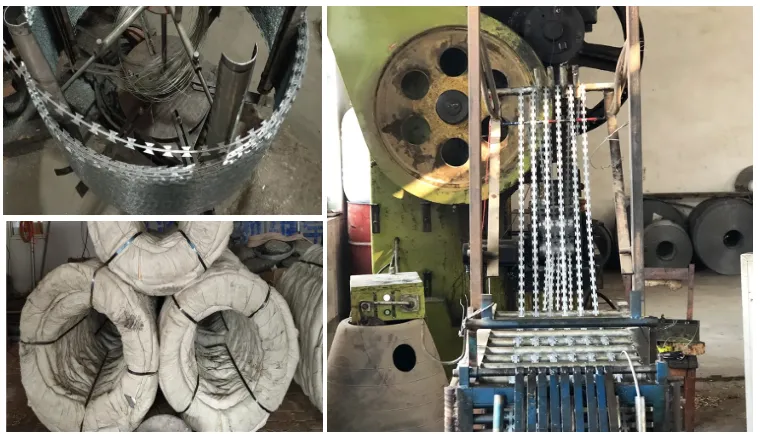
- Afrikaans
- Albanian
- Arabic
- Armenian
- Azerbaijani
- Basque
- Belarusian
- Bengali
- Bosnian
- Bulgarian
- Croatian
- Czech
- Danish
- Dutch
- English
- Esperanto
- Estonian
- Finnish
- French
- Galician
- Georgian
- German
- Greek
- hawaiian
- Hindi
- Hungarian
- Indonesian
- irish
- Italian
- Lao
- Latvian
- Lithuanian
- Luxembourgish
- Macedonian
- Maltese
- Myanmar
- Norwegian
- Polish
- Portuguese
- Romanian
- Russian
- Serbian
- Slovak
- Somali
- Spanish
- Swedish
- Thai
- Turkish
- Turkmen
- Vietnamese
ديسمبر . 05, 2024 18:10 Back to list
installing welded wire fence
Installing Welded Wire Fence A Comprehensive Guide
Welded wire fencing is an effective and durable solution for a variety of applications, including gardening, animal containment, and property delineation. Unlike traditional fencing options, welded wire fences offer enhanced strength and longevity due to their construction, which involves welding the wire intersections together, creating a more robust structure. Here’s a comprehensive guide to help you install a welded wire fence on your property.
Step 1 Planning and Preparation
Before you begin installation, it’s essential to plan your fence layout. Measure the area where you intend to place the fence, taking note of any obstacles like trees, shrubs, or existing structures. This will help you determine the number of panels you need and the spacing for the fence posts. Typical spacing for posts is 6 to 8 feet apart, depending on the height and type of the welded wire fence.
Once your layout is decided, check local building codes and regulations regarding fencing. Some areas may require permits or have specific height restrictions.
Step 2 Gathering Materials
Next, you’ll need to gather the necessary materials and tools. Here’s a list to get you started
- Welded wire fencing panels - Fence posts (wood or metal) - Concrete mix (if using metal posts) - Post anchors (if applicable) - Fence staples or ties - A measuring tape - A level - A post hole digger or auger - A hammer - Wire cutters
Make sure to purchase additional materials to account for any mistakes or adjustments during installation.
Step 3 Installing Fence Posts
installing welded wire fence

Begin by marking the locations of your fence posts according to your planned layout. Use a measuring tape to ensure accuracy. Once marked, use a post hole digger or auger to create holes for the posts. The holes should be approximately one-third of the post height deep, which provides ample stability.
Insert the posts into the holes and use a level to ensure they are straight. If using metal posts, you can set them in concrete for additional support. Mix the concrete according to package instructions, then fill around the base of the post and allow it to cure for at least 24 hours before proceeding.
Step 4 Attaching the Welded Wire Fence
Once the posts are securely in place, it’s time to attach the welded wire fencing. Begin at one end of the fence line and roll out the fencing panel along the posts. Use wire cutters to trim the wire to the desired length, if necessary.
Attach the welded wire to the posts using fence staples or ties. Start at the top of the panel and work your way down, ensuring the wire is taut but not overly stretched. For added security, consider attaching the wire to every other post or using additional fence stays for extra support, depending on the height and strength of the wire.
Step 5 Finishing Touches
After the fencing is attached, walk along the entire length of the fence to check for any loose sections or areas that need reinforcement. Trim any excess wire and ensure there are no sharp edges exposed that could pose a hazard.
Lastly, consider adding a gate if your fence encloses an area that requires access. Gates can be constructed from the same welded wire material or purchased as pre-made kits.
Conclusion
Installing a welded wire fence may require some effort and time, but the durability and functionality it provides make it a worthwhile investment. By following the steps outlined above, you can achieve a professional-looking installation that enhances your property while serving its intended purpose effectively. Whether you are protecting your garden or keeping pets safe, a welded wire fence offers a practical and long-lasting solution.
-
Your Ultimate Solution for Australian Temporary Fencing
NewsMay.14,2025
-
The Ultimate Guide to Crowd Control Barriers: Secure Your Events with Ease
NewsMay.14,2025
-
Secure Your Livestock with High-Quality Livestock Fence Panels
NewsMay.14,2025
-
Enhance Your Livestock Management with Top-Quality Cattle Fences
NewsMay.14,2025
-
Enhance Security and Safety with Temporary Fencing Solutions
NewsMay.14,2025
-
Corral Gates
NewsMay.14,2025









